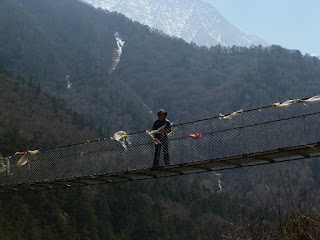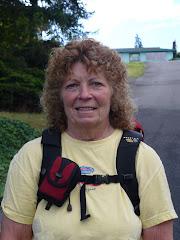The bridges, the bridges, the bridges
The bridges cross the rivers and valleys; they connect the mountains and save five or six hours walking time plus they provide a safe (?) way to cross raging rivers–especially during the monsoons. Most suspension bridges are 100 to 150 meters wide (over 500 feet–think 1 1/2 football fields.) People share the bridges with the Yak trains, and yes, the Yaks have the right of way. Too many people and Yaks on a bridge can cause a lot of sway, motion and angst, but for the most part, they are safe when not overloaded or being washed away by flooding or bursting mountain lakes. Unfortunately, global warming has caused glaciers to recede and fill glacier lakes. Two years ago one of the lakes burst, flooded a village, killed many people and wiped out a bridge. I crossed the new bridge hoping it didn't suffer the same fate. This scenario has become an ongoing concern for the Solo Khumbu Region and many studies are being done on the effects of global warming in the Himalayas. Meanwhile, the bridges stretch across vast valleys linking families, trekkers, climbers and commerce. In a sense, they are holding the country together as they sway far above the Dudh Koshi, the Bhote Koshi and the Imja Khola.
























No comments:
Post a Comment